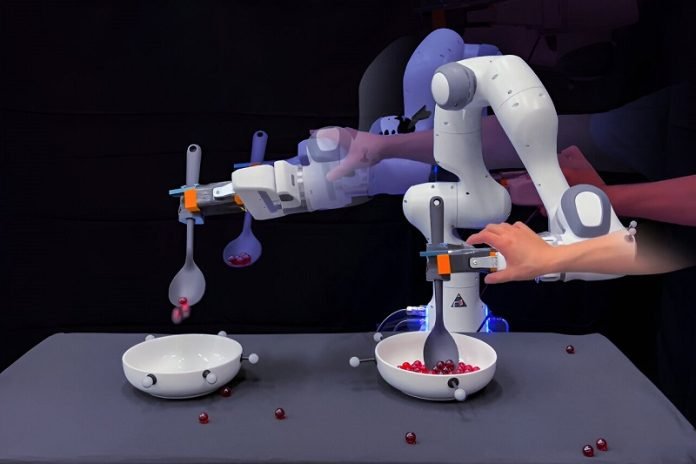
In a world where technology is rapidly advancing, engineers at MIT are taking a significant step towards making household robots smarter and more adaptable.
Imagine a robot that doesn’t just mimic human actions but also understands and reacts to unexpected situations, just like we do.
This development could mean robots that are more helpful around the house, from cleaning up messes to helping with daily tasks.
Usually, robots learn tasks by copying exactly what a human does.
This method, known as imitation learning, involves a human showing a robot how to do something, like moving a spoon from one bowl to another, and the robot repeating these actions.
However, this approach has a big limitation: if something unexpected happens, like if the robot is bumped and drops the spoon, it doesn’t know what to do next except to start over from the beginning.
This is because it was only taught to follow a set pattern of movements without understanding the task’s context or how to adapt to changes.
MIT engineers are working to give robots a kind of “common sense” to handle these unexpected changes without restarting their tasks or needing a human to fix the problem.
Yanwei Wang, a graduate student at MIT, and his team are blending the physical actions of robots with the problem-solving capabilities of large language models (LLMs).
LLMs are powerful computer programs that understand and use language in a way that mimics human thinking.
The team’s new approach breaks down tasks into smaller steps or subtasks.
For example, to move marbles from one bowl to another, a robot would need to first reach for the bowl, then scoop up the marbles, move them over to the next bowl, and finally pour them in.
This breakdown makes it easier for the robot to understand and complete the task piece by piece.
If the robot gets off track or makes a mistake during one of these subtasks, it can now identify the error and correct it on its own, moving forward without having to start all over again.
This self-correction is made possible by connecting what the robot is physically doing with what it understands about the task through language, using LLMs.
The researchers developed an algorithm that helps the robot match its actions with the correct step in the task, even if something goes wrong.
This process, called “grounding,” helps the robot know where it is in the task and what it needs to do next, based on both its physical state and the task’s language description.
In tests, the MIT team showed that their robot could successfully complete the task of scooping marbles, even when faced with interruptions like being nudged or dropping the marbles. The robot could adjust its actions and continue without needing to start from scratch.
This breakthrough is not just about making robots better at specific tasks; it’s about making them more flexible and capable of adapting to the unpredictable nature of real-world environments.
By giving robots a way to understand and navigate their tasks more like humans do, the team at MIT is paving the way for robots that can be truly helpful in our daily lives, making household chores easier and freeing us up to focus on more important things.
Source: MIT.



